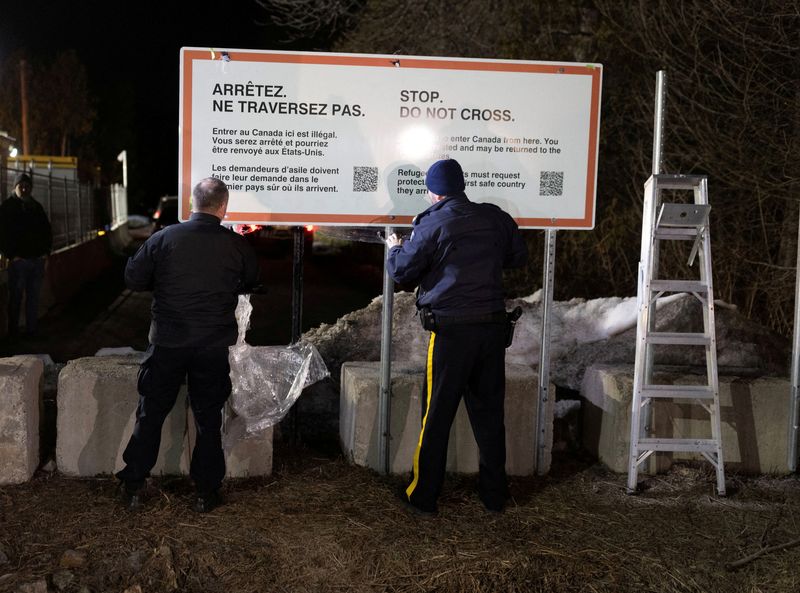By Anna Mehler Paperny
TORONTO (Reuters) – Canada’s Supreme Court on Friday upheld a border pact under which Canada and the United States send back asylum seekers crossing the land border, finding the agreement does not violate asylum seekers’ right to life, liberty and security of the person.
But it sent the case back to a lower court to determine whether the contested agreement violates asylum seekers’ right to equal treatment under the law.
The ruling came as Canada was taking steps to more tightly manage its border with the United States. In March the two countries amended the Safe Third Country Agreement so it applies to the length of the 4,000-mile (6,440-km) land border, rather than just at formal crossings.
WHAT DOES THE RULING SAY?
The Supreme Court found that built-in “safety valves” that allow some asylum seekers to avoid being turned back in certain circumstances mean the agreement does not violate their right to life, liberty and security of the person under Canada’s Charter of Rights and Freedoms.
But the court also found an unaddressed question when it comes to whether the agreement violates equality rights.
WHAT HAPPENS NEXT?
The agreement stands and the case will return to federal court to determine whether the agreement violates asylum seekers’ right to equal treatment under the law.
Refugee advocates claimed the agreement violates that right because they argue the United States is less receptive to refugee claims predicated on gender.
A lower court could find in favour of refugee advocates or the government, a decision that could be appealed either way. The case could wind up back at the Supreme Court, lawyers told Reuters.
WHAT PRECEDENT DOES THE RULING SET?
It could prompt courts to pay closer attention to challenges under the equal treatment section of Canada’s Charter of Rights and Freedoms, said lawyer Jamie Chai Yun Liew, who represented some of the parties intervening in this case.
“Now the court is saying, ‘You should do the work.’ … By ignoring it, you’re dismissing very important claims.”
HOW HAVE MIGRANT MOVEMENTS CHANGED?
The expansion of the Safe Third Country Agreement is already having an impact on migrant flows into Canada. In March, Royal Canadian Mounted Police intercepted 4,173 asylum seekers on their way to file refugee claims in Canada after crossing irregularly. Last year, almost 40,000 people crossed into Canada between formal crossings to file refugee claims.
Between March 25, when the amendments took effect, and May 28, 618 asylum seekers crossed between ports of entry and were referred to the Canada Border Services Agency, according to agency figures. As many as 283 were sent back to the U.S., 247 were allowed to file refugee claims in Canada under exceptions to the agreement, and another 88 were being processed.
At the same time, the number of people caught crossing southbound into the United States spiked in March to 992 from 630 in February and stayed high in April, U.S. Customs and Border Patrol figures show.
The number of people apprehended by the U.S. Border Patrol near the northern border in the first seven months of fiscal 2023, which began in October, is more than double the total for fiscal 2022, the figures show.
A Customs and Border Patrol spokesperson could not give a reason for the increase.
(Reporting by Anna Mehler Paperny; Editing by Denny Thomas and Jonathan Oatis)
